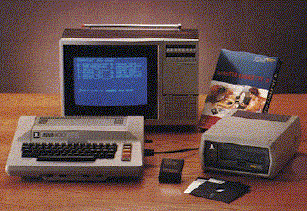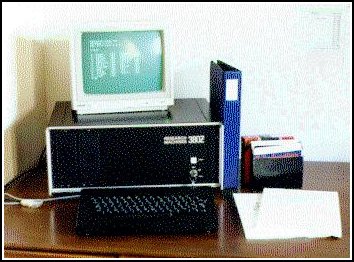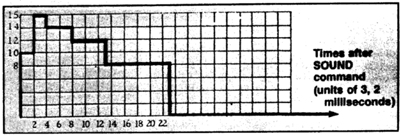EARLY personal computers, say around 1976, were very limited in their graphics capabilities. A video screen capable of displaying 16 lines of 24 characters was considered normal. There was, therefore, little possibility of using a video screen to present other than basic alphanumeric information.
The introduction of memory-mapping. techniques, where the individual character blocks on the screen corresponded to single memory locations, allowed more flexibility and machines like the Pet introduced reasonably-sophisticated graphics at a low price.
Since those days, two developments have occurred which could revolutionise the approach to the presentation of information on a screen, especially in the educational field. The first development was high-resolution graphics. Instead of the more usual 25 x 40 picture element (pixel) resolution, high-resolution graphics have up to 256 x 392 pixels. That allows much higher definition of diagrams on the video screen. For educational use, the advantages of high-resolution graphics are obvious.
The second development is inexpen- sive colour graphics. That development is so new that there are still many arguments about the uses and advantages of colour in graphics.
Most graphics systems work in similar
COLOR GRAPHICS
Inexpensive aids to
presentation
All the computer does is to transfer the contents of the memory on to the
by Robin Bradbeer
screen. As each memory location can store one byte of eight bits, that means that 2’ or 256 characters are available.
The most common method of encoding characters is the ASCII system. As it has only seven bits of information, only 128 characters are available. Most personal computer systems add another 128 to make up the
There is no standard for them so that Pet graphic symbols, for example, have different codes from Sorceror graphics. The codes are interpreted into letters and graphics symbols by a ROM called a character generator. It is clear that all this memory detracts from the amount of memory available for use in the system by the user.
Another method of generating video information is to split the screen into a series of discrete points, say 312 x 210. That requires a good deal more memory. Each point on the screen then corresponds to one bit in the memory, hence eight points require one byte of memory; 312 x 210 points therefore need 8K bytes.
The high-density graphics capability is available on a few computers, like the Apple II. It is a useful facility for educational users but unless complicated graphical analyses are needed, it is not ideal for business use.
Limitations
To use graphics to the optimum effect involves adapting to the machine language of the computer. It is possible to do so from Basic with systems which have a character generator ROM but that limits the user to the characters available on the computer.
On the Pet, for example, it limits a user to 128 characters within the 25 x 40 format. Other systems have similar restraints.
Those with high-resolution graphics,
however, like the Apple II or 380-Z,
offer certain facilities which allow users
not only to create their own characters
but also to vary the number of pixels
available for use. The more memory
needed for graphics, the less is required
for program memory. Consequently
high-resolution graphics requires a
system with a good deal of RAM.
High-resolution black-and-white
graphics are available on a number of
computer systems. The favourite
method is to have a board which plugs in
to the main computer system. That is
how Research Machines, Acorn and
most bus-structured systems work.
(continued on next page)
Atari 800

picture borrowed from www.backntime.net

![Apple ][. Picture borrowed from Apple //e manual](apple2.jpg)
